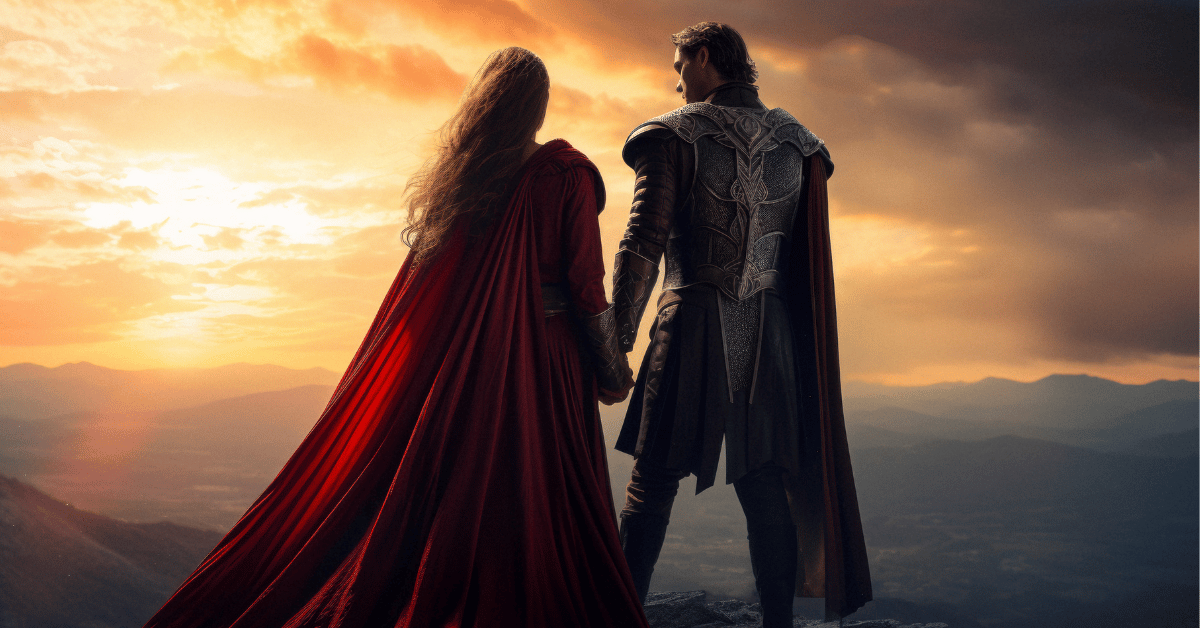When readers closed the final page of Empress Vol. 1, they were left with a swirl of questions, heartbreak, and anticipation. Would Empress Marava survive the tightening grip of the Imperial Guard? Could the scattered seeds of rebellion ever grow into a force capable of toppling the most powerful empire in the known universe? Empress Vol.2 answers these questions with an intensity that both expands the universe and delves deeper into the soul of its characters.
At its core, Empress Vol. 2 is not just a continuation of a space‑opera saga. It is a meditation on loyalty, the weight of leadership, and the price of freedom. Set in a galaxy where politics is as dangerous as warfare, the second volume navigates shifting alliances, ancient prophecies, and the fragile humanity of those burdened with impossible decisions. For those wondering if Empress Vol. 2 merely repeats the beats of its predecessor, the answer is no — it builds upon them, weaving a richer tapestry that invites both awe and discomfort.
From the frozen markets of Arthon Prime to the blazing sky‑fortresses of the Nethros Belt, this installment expands the series’ visual and thematic range. Readers will meet new allies and enemies, each bearing their own scars and secrets. The narrative thrives on contrast — moments of quiet reflection give way to sudden eruptions of violence, much like the unpredictable heart of rebellion itself. In this volume, the Empress is no longer a reluctant figurehead but a catalyst, and every choice she makes reverberates across star systems. This is a story that doesn’t just move forward — it plunges into deeper, darker waters.
The Story So Far
Empress Vol. 1 introduced us to Marava, the reluctant ruler whose abdication set in motion a chain of events that fractured the galaxy’s political order. When the Imperial Guard sought her execution for desertion, she fled with a small band of loyalists, seeking refuge among distant colonies. Along the way, she uncovered whispers of an ancient prophecy predicting the fall of the empire and the rise of a ruler born of exile.
By the closing chapters of Vol. 1, Marava had narrowly escaped an assassination attempt, but at a steep cost — her most trusted advisor, General Lurean, was taken captive. The seeds of rebellion were planted, but hope seemed fragile, scattered like stardust in the void. Vol. 2 begins at this point of uncertainty, but it quickly accelerates into a grander and more dangerous odyssey.
Volume 2: The Core Conflict
In Empress Vol.2, the narrative revolves around three major threads. First, Marava must rescue General Lurean, whose knowledge of rebel networks is the key to uniting the fractured resistance. Second, she faces the emergence of Lord Dravik, a warlord who claims the prophecy for himself, using it as a rallying cry for a far more ruthless uprising. Finally, Marava grapples with her own internal transformation — from fugitive to leader, from survivor to revolutionary icon.
The most striking aspect of Vol. 2’s storytelling is its refusal to portray rebellion as morally pure. The rebels, while fighting against oppression, make compromises, alliances, and sacrifices that blur the lines between heroism and villainy. As Marava says at one point, “The stars do not distinguish between the light of freedom and the fire of destruction.”
The galaxy’s political landscape shifts rapidly. Colonies once neutral are forced to choose sides. Merchant guilds, seeing profit in chaos, sell weapons to both the resistance and the empire. And in the shadows, the prophecy itself becomes a weapon — interpreted differently by each faction to justify their cause.
Table 1: Main Characters in Empress Vol.2
| Character | Role in Vol. 2 | Key Development |
|---|---|---|
| Empress Marava | Former ruler turned rebel leader | Evolves from reluctant fugitive to decisive revolutionary figure |
| General Lurean | Captive strategist | Provides crucial intelligence; questions morality of rebellion’s tactics |
| Lord Dravik | Rival warlord | Seeks to twist prophecy to his advantage; represents a darker vision of revolution |
| Aela Vynn | Smuggler turned ally | Balances self‑interest with loyalty; becomes critical in supply chain for rebels |
| Tovan Rehn | Imperial defector | Struggles with guilt; acts as double agent, blurring lines between friend and foe |
Expanding the Universe
One of the defining achievements of Empress Vol.2 is its expansion of the series’ worldbuilding. The introduction of the Nethros Belt, a chain of floating fortresses, adds a striking new setting that serves as both a sanctuary and a battlefield. Similarly, Arthon Prime’s underground frost markets reveal how ordinary citizens survive under imperial rule, trading in contraband relics and forbidden knowledge.
The scope is vast, but the creators avoid making the universe feel impersonal. Each location is grounded in sensory detail — the icy bite of Arthon’s wind, the metallic taste of recycled air aboard rebel frigates, the thrum of engines in the Nethros sky‑fortresses. These spaces are not merely backdrops but living ecosystems that shape the story.
As one rebel mechanic tells Marava, “Every world has its own rhythm. Learn it, and you can dance through any war.” This sense of place anchors the reader even amid galactic chaos.
Themes and Moral Complexity
While the first volume explored themes of escape and survival, Empress Vol. 2 confronts the question of what comes after survival. How does one build a better world from the ashes of an old one? And is it possible to do so without repeating the same cycles of power and corruption?
The prophecy looms over every decision, but its meaning is slippery. To some, it promises liberation; to others, domination. This ambiguity fuels much of the tension, forcing characters to navigate a moral landscape where right and wrong are often indistinguishable.
In one pivotal moment, Marava orders a preemptive strike on an imperial convoy, knowing civilians may be caught in the crossfire. Her justification is chillingly pragmatic: “The empire has taught us that mercy is a luxury. Today, we cannot afford it.” This complexity makes Vol. 2 more than just a story about rebels and tyrants — it becomes a meditation on the cost of change.
Table 2: Key Events Timeline – Empress Vol.2
| Event | Description | Impact on Story |
|---|---|---|
| Rescue of General Lurean | Marava launches daring mission to free her captured strategist | Restores rebel coordination but exposes them to greater danger |
| Rise of Lord Dravik | Ruthless warlord claims prophecy for himself | Splits rebellion into rival factions |
| The Frost Market Accord | Alliance formed with smugglers on Arthon Prime | Secures supply lines; increases dependence on questionable allies |
| Battle of the Nethros Belt | First major open‑space conflict in the war | Solidifies Marava’s role as military leader |
| Prophecy Revelation | New interpretation emerges that challenges Marava’s claim | Creates crisis of legitimacy within rebellion |
Character Arcs and Emotional Core
The emotional resonance of Empress Vol.2 lies in its characters’ transformations. Marava’s arc is particularly compelling — she begins as someone fleeing responsibility but evolves into a leader willing to shoulder unbearable burdens. Her relationship with General Lurean is tested by ideological rifts, while her alliance with Aela Vynn adds a touch of unpredictability and humor.
Lord Dravik is a standout antagonist precisely because he is not entirely wrong. His vision of rebellion is brutal, but he forces Marava — and the reader — to question whether victory without compromise is even possible. Meanwhile, Tovan Rehn’s journey from imperial loyalist to conflicted double agent adds layers of tension, as his true loyalties remain uncertain until the final chapters.
The interplay between these arcs gives Vol. 2 a richness that transcends its action sequences, grounding the spectacle in deeply human struggles.
Visual and Narrative Style
The visual storytelling of Empress Vol. 2 is as ambitious as its narrative. Panels alternate between sprawling, cinematic vistas and intimate close‑ups that capture fleeting expressions of doubt, fear, and resolve. Color palettes shift with the emotional tone of each setting — cold blues and grays dominate the frozen wastelands, while fiery oranges and reds mark the chaos of battle.
Narratively, the creators use parallel storylines to build tension. As Marava leads her forces into the Nethros Belt, the narrative cuts to Lord Dravik consolidating power elsewhere, creating a sense of inevitability about their eventual clash. This interplay keeps the pace brisk while allowing moments of reflection to resonate.
Cultural and Political Resonance
Though set in a fictional galaxy, Empress Vol. 2 echoes real‑world questions about leadership, propaganda, and the fragility of alliances. The use of the prophecy as a political tool mirrors how narratives are often weaponized in human history. The rebellion’s internal divisions remind us that even noble causes can fracture under the weight of differing visions for the future.
Readers will find themselves reflecting on current events as they watch Marava struggle to unify her followers without becoming the very kind of ruler she once fled from. It is in these parallels that Empress Vol. 2 transcends its genre trappings and enters the realm of meaningful political allegory.
Conclusion
Empress Vol. 2 is not just a worthy sequel — it is a leap forward in scope, ambition, and emotional depth. By expanding the universe, deepening its characters, and confronting uncomfortable truths about rebellion and leadership, it elevates the series beyond simple space opera into something richer and more resonant.
The creators have crafted a work that rewards careful reading and reflection. The battles are thrilling, the visuals stunning, but it is the moral ambiguity and character complexity that linger long after the final page. For readers of the first volume, this is an essential continuation. For newcomers, it is a powerful entry point into a galaxy both wondrous and deeply flawed.
As Marava herself says in the closing pages, “Freedom is not a gift to be given. It is a fire to be kept alive, even in the coldest dark.”
FAQs
Q1: Do I need to read Empress Vol. 1 before starting Vol. 2?
Yes, while Empress Vol. 2 offers enough context to follow its plot, the emotional stakes and character relationships are far richer if you’ve experienced Vol. 1. Key motivations, alliances, and betrayals introduced in the first volume directly shape the events of the sequel.
Q2: What is the main focus of Empress Vol. 2?
The second volume shifts from a story of escape to one of active rebellion. Marava transitions from a fugitive to a revolutionary leader, navigating shifting alliances, rival warlords, and the moral cost of war.
Q3: Are there new characters introduced in Vol. 2?
Yes. New allies such as Aela Vynn, a daring smuggler, and antagonists like Lord Dravik, a ruthless warlord, deepen the conflict. These characters add fresh layers to the story’s political and personal stakes.
Q4: Does Vol. 2 reveal more about the prophecy?
Absolutely. The prophecy’s interpretation becomes a central battleground in Vol. 2. Multiple factions claim it supports their vision of the galaxy’s future, forcing Marava to fight not just for survival, but for the legitimacy of her leadership.
Q5: Is the tone darker than Vol. 1?
Yes. While the first volume focused on flight and survival, Vol. 2 deals with the harsher realities of rebellion. It explores difficult moral choices, the costs of leadership, and the gray areas between heroism and tyranny.











